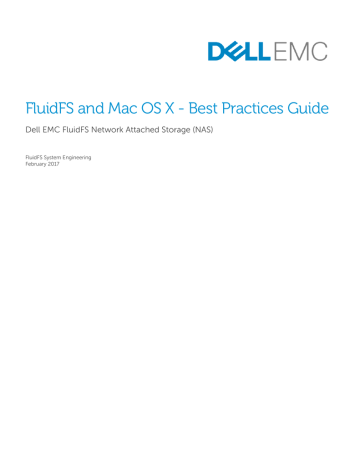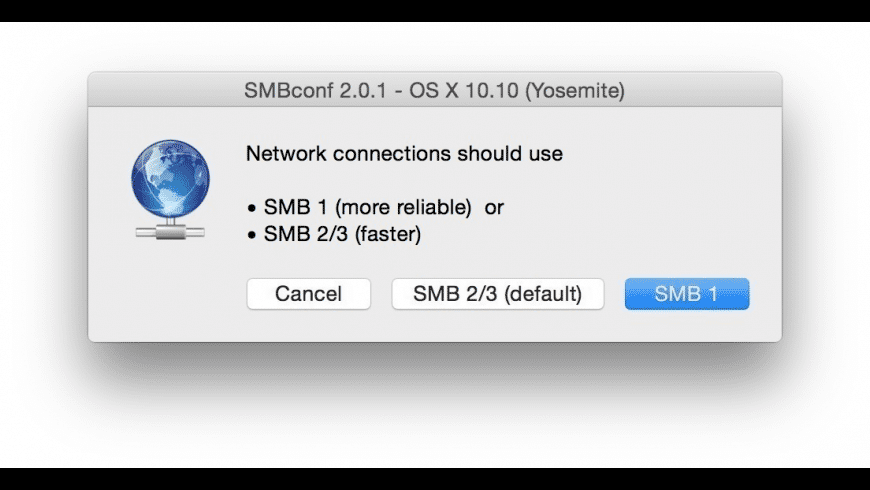

The last command is required for this to work. Now, after you save the file, make sure you run: sudo automount -vc What one user recommends is to use the -nosuid option in your auto_master file: /- auto_smb -nosuid Anyway, I really wanted to figure out a solution, so I did a little bit more research and found this link.
#Smb mac os x mavericks password
This provides an extra security layer especially if you’re specifying a password to access your SMB mount. It’s important to note that you should still chmod the auto_smb file to 600 so that the file is only readable by root. I first tried Jeremy’s recommendation, however, his suggestion did NOT work for me.
#Smb mac os x mavericks update
Update 07-01-2013: Ok, well looked into this more and I think I finally found a solution to the issue where root is the only one allowed to read/write to the mount. I will verify this when I get the chance.

If you’ve run into the issue where root is the only one allowed to read/write to the mount, doing this will set the necessary permissions for the SMB share (particularly when your system reboots). Update 04-26-2013: As a commenter indicated below, you may want to chmod the auto_smb file to 600. a $ share), you’ll need to escape that too: /mnt/mount_point -fstype=smbfs,soft few notes: Also, if you’re connecting to a hidden share (i.e. If you need to go through Active Directory to authenticate, use the following syntax in your /etc/auto_smb file: /mnt/mount_point -fstype=smbfs,soft that you’ll have to escape the semicolon ( ). Modify the /etc/auto_master ( sudo vi /etc/auto_master) file and add the following line: /- auto_smb -nosuidĬreate a folder on your system to place your mount in: sudo mkdir /mntĬreate an /etc/auto_smb ( sudo vi /etc/auto_smb) file that contains the following: /mnt/mount_point -fstype=smbfs,soft run the following command to give the /etc/auto_smb the proper access permissions: sudo chmod 600 /etc/auto_smb If you use this option, make sure you read my comment below. Drag the icon for your network drive from your desktop to the startup items.Open system settings > users > login items.Enter the infos for your login to your network drive and tick the ‘remember in keychain’.Connect to your network drive (finder > go > connect to server).This option is courtesy of a Guest commenter (thanks, whoever you are!): Again using the terminal type in sudo vifs and then insert the following line: smbserver:/share /Volumes/mount_point url run sudo automount -vc and then cd to your mount point and it should connect. nosuid parameter in the /etc/auto_master file prevents OSX from mounting the resource as readonly by root (see update below!).When entering the password, it’s better to URL encode it as some special characters will cause the automount to fail silently.The soft parameter specifies OSX to not halt on failure to connect to the SMB server during boot.a $ share), you’ll need to escape that too: /Volumes/mount_point -fstype=smbfs,soft few notes: If you need to go through Active Directory to authenticate, use the following syntax in your /etc/auto_smb file: /Volumes/mount_point -fstype=smbfs,soft that you’ll have to escape the semicolon ( ). Then, I created an /etc/auto_smb ( sudo vi /etc/auto_smb) file that contained the following: /Volumes/mount_point -fstype=smbfs,soft run the following command to give the /etc/auto_smb the proper access permissions: sudo chmod 600 /etc/auto_smbįinally, update your settings: sudo automount -vc Authenticating Through Active Directory The first option is to modify the /etc/auto_master ( sudo vi /etc/auto_master) file and add the following line: /- auto_smb -nosuid Mavericks users, please use Option 4! Option 1 There’s a few options for creating a permanent mount in OSX so, hopefully, one of them will give you the solution. If you have any tips, make sure to share it in the comments! Maybe some day Apple will make it a little bit easier, but if this is something you’re looking to do, check out the solutions below. Mac Admins Podcast, an permanent SMB mount in OSX is not so easy.

Thanks so much to our Patreon supporters. We couldn't do it without the support of the community!Īllen Hancock, /ccp Sleep 60 touch "/Library/Preferences/SystemConfiguration/.plist"ĭave continues: All you have to do is actually 'touch' the /Library/Preferences/SystemConfiguration/.plist file and that's enough to restart it. To restart the smbd daemon in OS X Server 10.7 10.8 10.9 add this plist to launchd No need to restart that mini you can just restart the SMB daemon, and since SMB is stateless, it normally won’t affect connected users. Dave Provine of Premier Mac was kind enough to write in with a great tip, following our discussion of SMB issues with Mavericks Server in Episode 60:


 0 kommentar(er)
0 kommentar(er)
